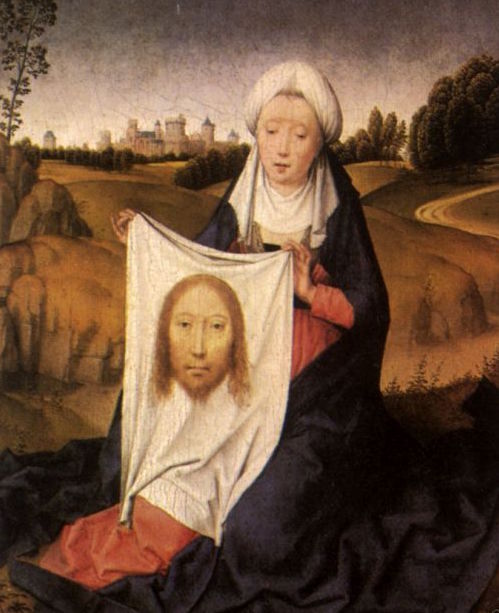Ernst Hemingway explained the origin of the word Verónica. The extraordinary painting by Hans Memling illustrates clearly how the Art of Bullfighting has been inspired by the Christian Tradition. The way Saint Veronica holds the Holy Cloth with both hands is the way the bullfighter holds the cape for the start of the Veronica.
“The man who went out with the cape in both hands after the bull had been run, and cited him from in front, standing still as the bull charged, and with his arms moving the cape slowly just ahead of the bull’s horns, passing the bull’s horns close by his body with a slow movement of the cape, seeming to keep him controlled, in the folds of the cape, bringing him past his body each time as he turned and recharged; doing this five times and then finishing off with a swirl of the cape that turned the man’s back on the bull and, by cutting the bull’s charge brusquely, fixed him to the spot; that man was the matador and the slow passes that he made were called veronicas and the half pass at the end a media-veronica. Those passes were designed to show the matador’s skill and art with the cape, his domination of the bull and also to fix the bull in a certain spot before the entry of the horses. They are called veronicas after St. Veronica who wiped the face of Our Lord with a cloth and are so called because the saint is always represented holding the cloth by the two corners in the position the bullfighter holds the cape for the start of the veronica” Ernst Hemingway, Death In The Afternoon.
Bullfighting And Christian Tradition
Responder
